Every day, we welcome people to our group, Portuguese Camino de Santiagodozens of questions about it. From accommodation to routes, none is left unanswered by our moderators and members. However, as not everyone has Facebook, we've decided to leave the usual questions here, to help everyone organize their walk to the Galician capital.
We've taken the 50 questions about the Camino de Santiago from various groups of pilgrims around the Internet. As there are so many, we've divided the questions into different themes.
Questions about what to take
Before you set off on your journey of a thousand years, there will be many questions running through your head. Where am I going, who am I going to meet and, after all, what do I have to pack? You're not alone. All pilgrims have questions about changes of clothes, shoes and even the best hats. The important thing is not to let any questions interfere with your process. So, in this section, you'll find out what shouldn't be missing from a pilgrim's backpack and, above all, what it's okay to leave at home.
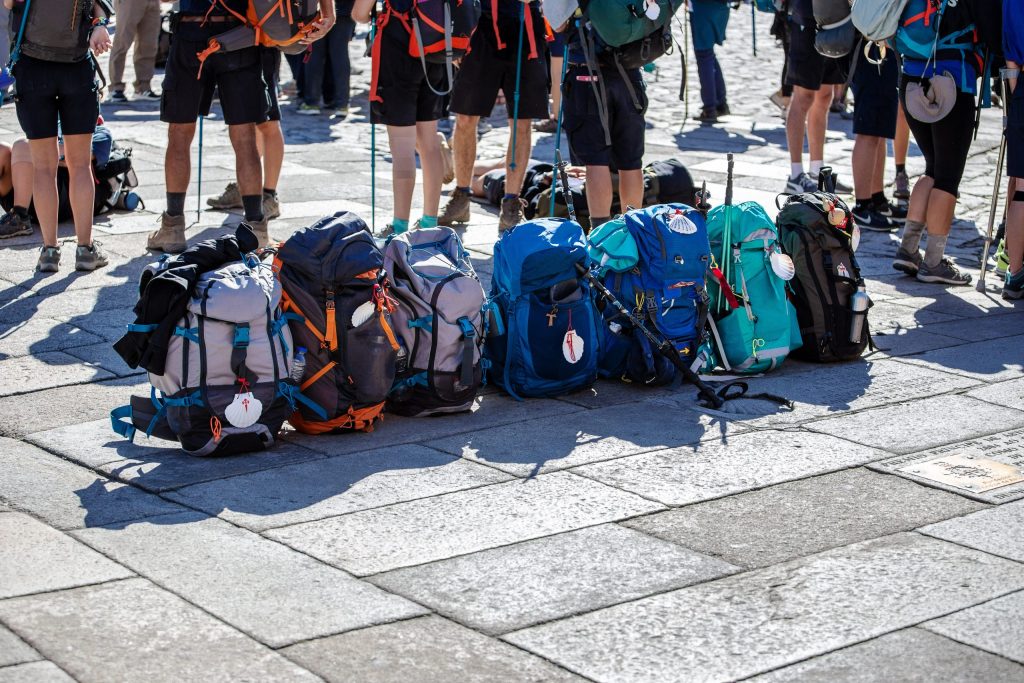
1) What kind of backpack should I use?
Although we can't suggest a specific model, there are certain characteristics that deserve your attention. Firstly, it should have room for at least 35 liters, but never more than 40. This way, you'll avoid overpacking, as you'll have a smaller backpack. Your back will thank you for it in the first 10 kilometers. Secondly, it should have a rigid frame and waist straps to distribute the weight across your shoulders and waist.
2) And how heavy should it be?
As little as possible. You can find the recommendation of 10% of our weight on the internet. We've even written an article about it. However, this equation only tells part of the story. For example, a person weighing 120 kilograms, in principle, doesn't need a backpack weighing that many kilograms. They may be tall, but their clothes don't weigh that much. However, a pilgrim whose scales always hit 50 isn't going to leave a sleeping bag at home just to be average.
This means that, although it's a good suggestion, it doesn't provide all the answers we need. So the most comfortable one for us is: the less the better.
3) What can't be missing from a pilgrim's backpack ?
Excellent question! In addition to the backpack itself, it's also important to have a sleeping bag or blanket to cover up at night, two changes of clothes and a first-aid kit. The latter includes basic hygiene products such as toothbrushes, toothpaste and shampoo (small bottles or samples are perfect).
All you need is the spirit of adventure. But we're sure you already have it! If you want to read more about organizing your backpack, you can read our article on the subject here.
4) Do I have to carry a pilgrim's credential?
Yes, because this document proves that you are making the journey under the name of Jesus' apostle. It also gives you access to hostels, the pilgrim menu and the Compostela welcome on arrival in the Galician capital.
5) Where can I buy it?
You can buy a pilgrim's pass, before or after you start your walk, from: associations of friends of the road, hostels, churches along the way or help points!
6) Is it necessary to wear a windbreaker at this time of year?
Even though this question was asked in the summer, it is suitable for all times of the year. Along the way, experienced pilgrims share their wisdom. One of the most frequently heard pieces of advice is: "It always rains in Galicia!". So it seems sensible to think about bringing one, if only just in case.
7) Should I take the pilgrim's shell?
It sounds like it, but it's not a requirement! However, if you want one as a souvenir, our pilgrims from the Portuguese Camino de Santiago group tell us that you can buy them along the way, in cafés and hostels.
8) What is the best footwear for the Camino de Santiago?
The best footwear is what you already have! Especially if you're thinking of buying a new pair just for the ancient trail. There's no need to do that, as it's the best way to get horrible blisters.
Whether you choose boots or sneakers is a personal choice. The former are great for cold, rainy months. The latter, as long as they're not too light, are also fine.
9) Does anyone have any tips on hats to wear in summer?
Hats are an essential part of any hiker's equipment, especially in the warmer months. So, from some with brims to more sporty ones, the important thing is to always have protection between you and the sun.
10) Are poles necessary?
Trail professionals say that poles must always be used. However, it's your choice. Either way, the benefits of this tool are obvious. They give you more stability in your stride, which will prevent those sudden falls and take your mind off the steep descent to Redondela.
11) Is there an app I should download so I don't get lost?
You can always use our websiteat caminhoportuguesdesantiago.eu, which has personalized maps with itineraries designed by pilgrims for pilgrims. However, we also recommend the Camino Ninja app, which is perfect for finding each other in times of distress.
Questions about preparations.
Apart from the weight of the backpack, you have to plan the Camino. Which one are you going to do? When? These questions are the simplest, as they depend solely on you and your available time. However, there are certain documents, such as a citizen's card, which are essential if you want to make the ancient journey safely. These and other questions are answered here!
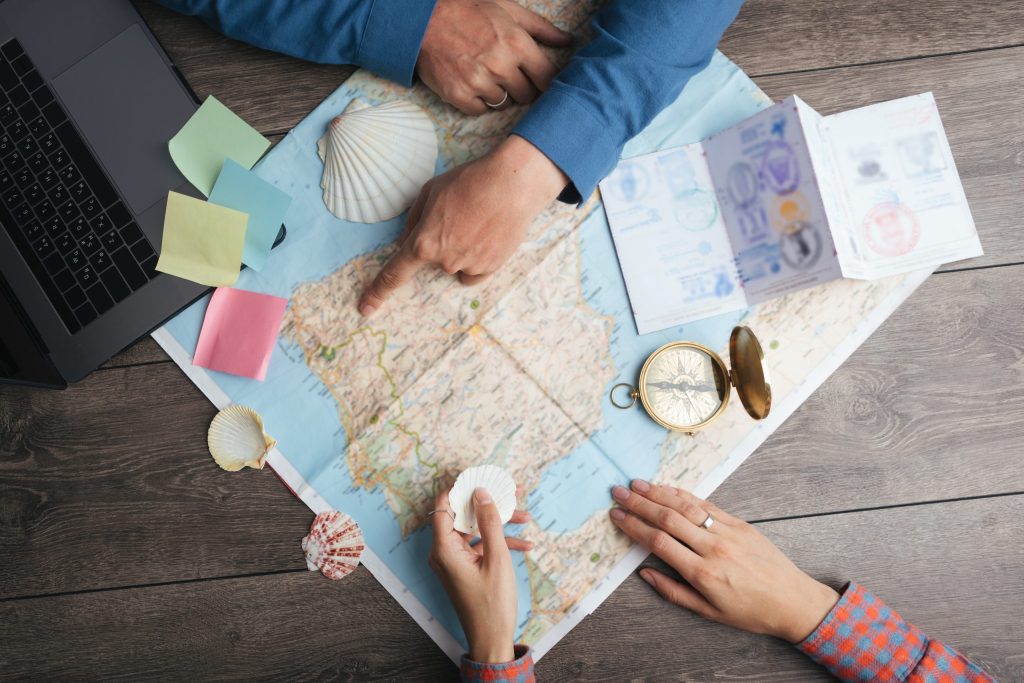
12) Can anyone tell me if I need to sign up to do the route?
This is a question that sometimes comes up in our Facebook group. However, there is no registration fee or price for the route. However, the closest thing to paying an entrance fee is the pilgrim's credential. But this can be purchased before or during the adventure, so that you have access to the hostels and the pilgrim menu. So follow your heart and start whenever you want! There are stories of people who, one day, after seeing the pilgrims from their window, started to walk to Santiago. We're not telling you to be that impulsive, but a little bit goes a long way!
13) Where should I start the Camino de Santiago?
At any stage of the route. Most people start in Porto, as it's difficult to have the time and mental availability to start the journey in Lisbon. However, to get to Compostela you only need to walk 100 kilometers to Santiago. However, if you're not interested in this document, the opening location should be as comfortable as possible for the Camino you want to do.
14) Do you have to plan stages?
The best plan would always be to go with the wind and the road. However, this is not possible for most people due to the enormous responsibilities we all carry. In other words, if you don't need to plan the stages, it's best to know the route as soon as possible. This will help you book hostels, if you feel the need, and figure out when you'll arrive in Santiago, so you can buy your return ticket. Or arrange a ride, of course.
15) Which path should I choose?
It's a matter of preference, as they are all different. Which part of Portugal and Galicia are you most curious about? Do you prefer the sea or the mountains? These answers will help you choose the best route for you. You can also read our article on the main Portuguese routes here!
16) Is there any difference between the routes?
The Camino de Santiago is a transformative trail. Each step tells a different story and every day is new. However, between the Coastal route and the Central route, the landscape also changes completely. On the former, you're always close to the sea. So it's important to wear plenty of sunscreen! On the second, the route to the Galician capital takes us through the Portuguese mountains and hills.
17) What are the best months to walk the Camino?
The advice given to all pilgrims is to avoid the high vacation season. As this is the time when most people are off work and therefore have time to walk, the route is crowded with pilgrims. The company is good, but you lose some of the calm required by the ancient trail. We therefore recommend the months of May and September. The heat is still there, but without the vigor of August and there is more space in the hostels. However, the truth is that any time is a good time to do the Camino de Santiago!
18) What is the average cost per day?
This question depends on your style of pilgrimage. Someone staying in a hotel will have a more expensive walk than someone who prefers public hostels. However, there is an average taken from the book by our pilgrim writer, Agostinho Leal, which tells us the following:
"(...) there's a maxim that works for most pilgrims: one euro per kilometer! That's right, five to ten euros for the hostel, ten euros for the pilgrim menu and another ten euros for the rest of the meals. (...) you have to do the math."
So we have an average of about 1 euro per thousand meters. In other words, if you leave Porto, you'll spend between 250 and 300 euros. If you don't get lost, of course.
19) How can I divide up the stops in each city?
All the answers are different. The good and pleasant thing would be to follow the maxim: if you're tired, stop, if you're hungry, eat. However, most people can't afford to go all the way to Santiago de Compostela without a return date. Many wouldn't even feel comfortable! Therefore, the best thing to do is to have set days to do the route. From there, you can use our website, caminhoportuguesdesantiago.eu, to plan your trip. However, there are no scripts on the Camino de Santiago! The stages we've created are just suggestions!
20) Where can I get European Health Insurance?
You can request the EHIC from Segurança Social Direta, using your password or Citizen's Card to access the service.
21) There are ATMs along the way where you have to pay a fee to withdraw money, but there are also some that don't have a fee. Can anyone tell me which ones are fee-free?
This is a question that worries people who don't have an account with a Portuguese or Spanish bank. And the answer, as usual, changes depending on the country you're in. In Portugal, there is no withdrawal fee for debit cards.
But we need to pay attention to the orange boxes: the ATMs. If you travel with a dual card, i.e. debit and credit, you will always pay "fees", as this service always opts for the second option.
In Spain, it's different. Unlike the country of Camões, the vast majority of ATMs charge a withdrawal fee. However, our Caminheiros always come to each other's aid. So if you need to take money out of your account in Spain, use the "A Banka" ATMs, as they don't charge anything.
Questions about stays.
There are always questions about accommodation. Is it safe, is there a risk of having nowhere to sleep, how much do they cost? Despite all these questions, the truth is that the Camino de Santiago, especially the most traveled routes, has options for all tastes. Find out more here!
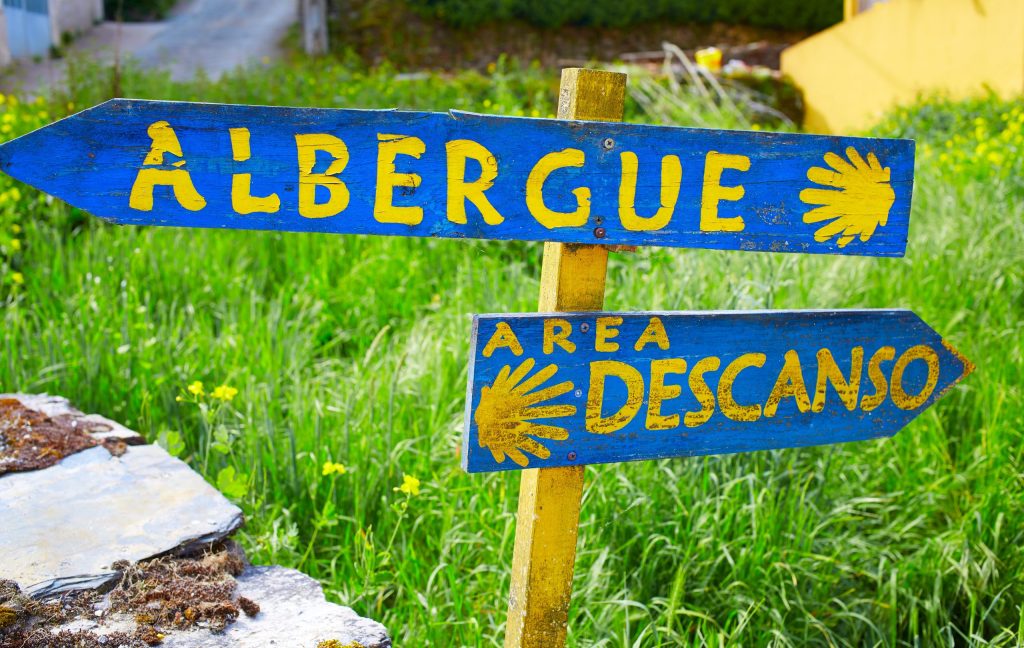
22) Do I need a pilgrim's pass to stay in a hostel?
Yes. It is also necessary to always present an identification document, such as a passport or citizen's card.
23) Is it necessary to book a hostel?
In the height of summer, you may have to. Public hostels have a rule that whoever arrives first on foot gets the bed. Then cyclists have preference and, finally, people who travel by other means.
It's possible that you'll arrive in a city and everything will already be full. One way to counter this fear is to book a private hostel beforehand. That way, you'll be free to take your time marveling at the beauty of the route, safe in the knowledge that, when you arrive, you'll have a bed and a shower waiting for you.
However, if you're going without plans and find yourself in this situation, try your luck in chapels and other religious spaces. They often offer what little they have, such as a corner on the floor. That's why it's important to take a sleeping bag in case you have to sleep in the kitchen of a monastery.
24) Can I stay up late?
No. The albergues have a notice of the pilgrims' departure time and this must be respected, as people have to prepare everything in order to receive the next pilgrims.
25) Do hostels offer breakfast?
Generally, only private hostels have this type of service. However, there is always a kitchen, so you can have something to eat at dawn.
26) Can I do my laundry in the hostel?
In the vast majority of hostels (we've never come across one where this isn't the case), you can do your own laundry. The choices tend to be between doing it by hand, in a tank, or by machine. The latter always comes at an extra cost.
27) Can I stay overnight in the hostel the night before the first day of the journey?
Yes, you just need a pilgrim's pass and proper identification.
28) Does anyone know of a public hostel in Santiago (or other stages)?
Generally, when pilgrims refer to public hostels, they mean hostels where you pay a donation. There are at least 3 in Santiago: Albergue Seminario Menor, San Lázaro Pilgrims' Residence and Albergue Fin del Camino.
However, you can find other places of refuge, such as guesthouses and hotels, on our website. At each stage, we have a selection of places to stay to make your journey easier.
29) Do hostels accept dogs?
Some of them! If you want to take your furry friend, you'll need to organize yourself differently from the rest of the pilgrims. It's best to mark the stages you want to take and call the albergues to ask if they accept dogs.
Questions about the Camino by bike.
The first pilgrims made the journey on foot, but today we can also go by bicycle. This different way of getting to Santiago also raises a number of questions. So you have to think about what to take more or less of, and even remeasure the days!
30) Is it better to walk or cycle the Camino de Santiago ?
For those who don't know how to ride a bike, it's best to walk! Either way, the Camino de Santiago is unique. However, they both have different characteristics. You can find out more about them in this article.
31) If you want to cycle the Camino de Santiago from Porto, what is the average number of days?
It depends on your expectations. For experienced cyclists, it can take as little as 3 days. But for most, 5 to 7 is the best. Not only does it give you time to see the sights, but the physical strain is less intense.
32) Is there a bicycle shipping service in Santiago?
Yes, there is! You can find more information here. However, if you prefer to take your bike with you on the train, you can always use this means of transport. According to our pilgrims in Portugal, the intercity trains allow 2 bikes per carriage, while on the Alfa trains you have to dismantle and pack it as luggage. In Spain, from Santiago to Vigo, pilgrims can take 3 bikes per carriage. So it's best to buy your tickets in advance, and always let them know that you're taking your wheeled companion!
33) What can't be missing from a cyclist's backpack?
A Bike Rescue Kit, of course! This includes swiss army knife, dismounts and mounts tires, lubricant for bicycles, tube and tire patches and a hand pump.
Questions about fitness and health.
The Camino de Santiago forces us to make a great physical and mental effort. That's why many questions arise from this insecurity? Am I fit enough to walk to the capital of Galicia? What if I get too tired? But fear not, because pilgrims help each other and have answers for everything. You can find them here:
34) What do I do if I feel my heart beating too hard?
Take it easy! You're making a huge effort. In principle, the sun is beating directly down on you. In these cases, it's best to find some shade and rest. And never take your shoes off, as your feet swell up and it becomes more painful to walk! When you've recovered, you can continue.
35) How fit do I have to be to do the Camino?
There are reports of people with serious health problems who have done the Camino de Santiago, like Anselmo. However, there are walkers with sporting habits who have left the route halfway through. Although it's not a sure-fire answer, this is a medium-difficulty route.
The best thing to do is to train well, with a heavy enough backpack and the shoes you'll be wearing until the end of the millennial trail. This is because, often, it's not the physical pain that forces you to stop, but the mental difficulty of making the effort to walk so many kilometers a day. To help you, we've written an article about preparing for the Camino de Santiago.
36) I have health problems and can't carry my backpack, are there transport companies?
Of course! This is a very popular service. Especially by people with walking difficulties or who can't carry weights.
37) What should I do if I get blisters on my feet?
Blisters are the most common injury on the trail and every day we meet someone complaining about it. In this case, the best remedy is prevention. Blisters are the result of repetitive friction on the skin. That's why you need to buy the right shoes, well worn in, to avoid creating this reservoir of fluids. But pay attention to this: if the blisters are causing excessive pain, stopping is the only option. Infections are recurrent in these situations and the consequences are far worse than leaving the path halfway through.
Other questions about the Camino de Santiago
We'll also leave you with some questions that don't quite fit in with the previous sections. From safety to meals, there's no question left unanswered on the Camino de Santiago. So here are some answers!
38) Is it safe to walk alone?
This question is most often asked by women. Since we can't guarantee 100% the safety of the Camino, we can only write about our own experience and that of other walkers. That's why we have this article in which you can answer some of your doubts and conclusions.
39) Is there anywhere you can find groups doing the Camino?
In our Facebook group, there are always pilgrims looking for people to do the Camino.
40) Is it better to walk the Camino alone or accompanied?
This is a question that each person has to answer for themselves. The best thing would be to experience both sensations, but if that's impossible, you should know that they say that "on the Camino you're never alone".
41) Do I need to show my vaccination certificate before entering the albergues?
It seems like an old question, but it's always valid. At the moment, you don't have to. However, this answer may change depending on the evolution of Covid-19.
42) What are the meals like on the Camino?
Whether you're hungry or just want to eat, every meal on the Camino de Santiago is special. They may not be great dishes designed by a haute cuisine chef, but the pilgrim menus are prepared to give the walkers energy for a symbolic price. Most of the restaurants have this option, so take the opportunity to fill your belly.
43) What do I have to do to receive the Compostela?
The Compostela is the document that certifies that you have completed the Camino de Santiago. To receive it, you just need to have your pilgrim's credential stamped at least twice a day. Then, before arriving in Galicia's capital, register at www.oficinadelperegrino.com. After your first few steps in the Plaza del Obradoiro, go to the pilgrim's office to collect your certificate.
44) How high is the Serra da Labruja?
It is the highest point on the Central Way in Portugal. That's why it divides opinion. There are those who do it without too much difficulty, moving easily between the greenery and the mountains. However, for others, it is the most difficult moment.
45) Should I worry about animals along the way?
No. Most of the animals you'll meet along the way are local cows and sheep. They're always locked up, so they don't have to walk the path themselves.
46) When I arrive in Spain, do I need to present my documents at the border?
No. In Valencia, you cross by foot. The physical border is the bridge linking the two countries and there are no police. On the Costa, on the small ferries, all you have to do is present your pilgrim's credential to receive the stamp.
47) Some of the stretches look dangerous, should I take the road?
No. None of the steps should seem unnecessarily dangerous. If you feel any kind of insecurity, turn back or review your steps.
48) Is the Way well signposted?
In the vast majority of variants, the Way is well marked with the typical yellow arrows.
49) When I arrive in Santiago I prefer to go home. Is there transportation?
Yes, the buses and trains are very close to the city center. You might want to buy your tickets in advance so you can leave at the time that suits you best.
50) What does "Good Way" mean?
Good Way, or Buen Camino, is the pilgrim's greeting. If you receive it, give it back, also saying, Good Way! But if you hear "Ultreia", you have to reply "Et Sulteia"! To understand this, read this article on the subject.
We know you have more questions to ask. So don't worry, share any questions you have in the group before embarking on this wonderful journey that changes us physically and spiritually. Have a good journey!
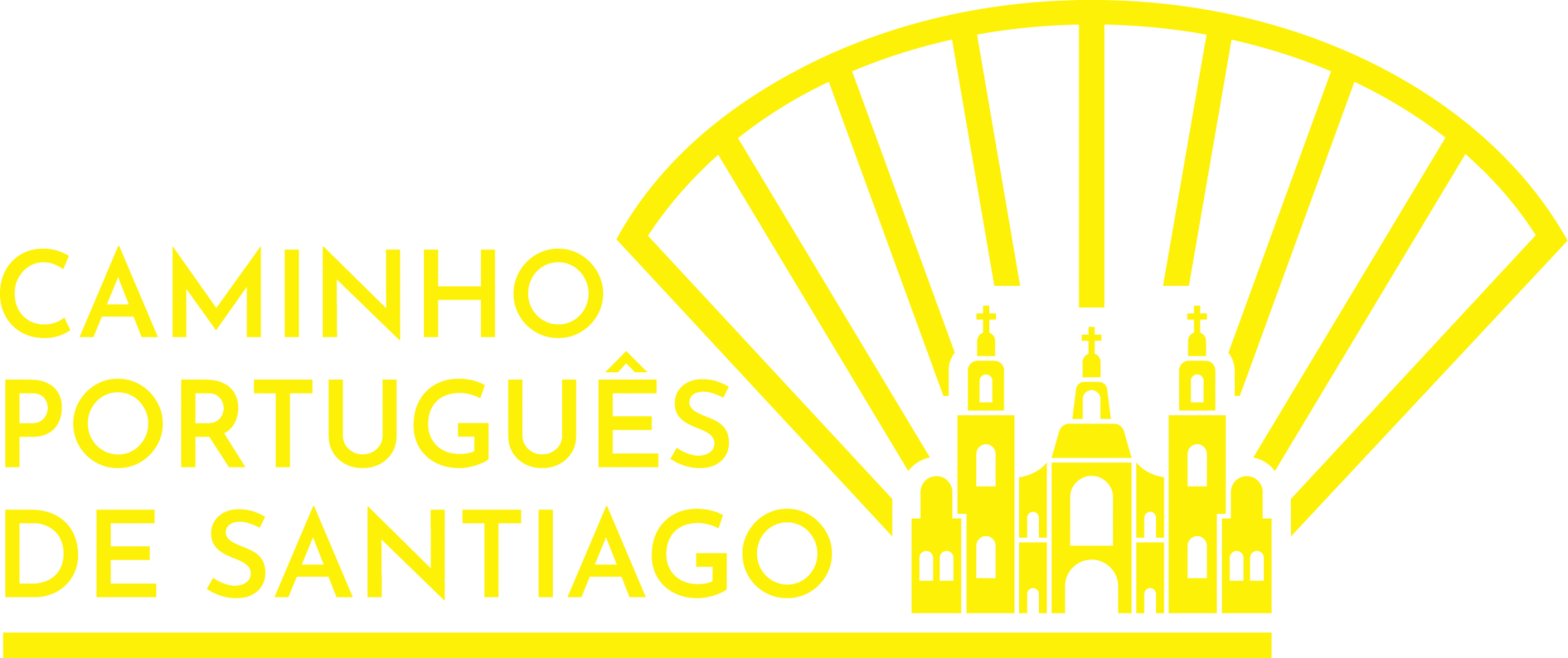



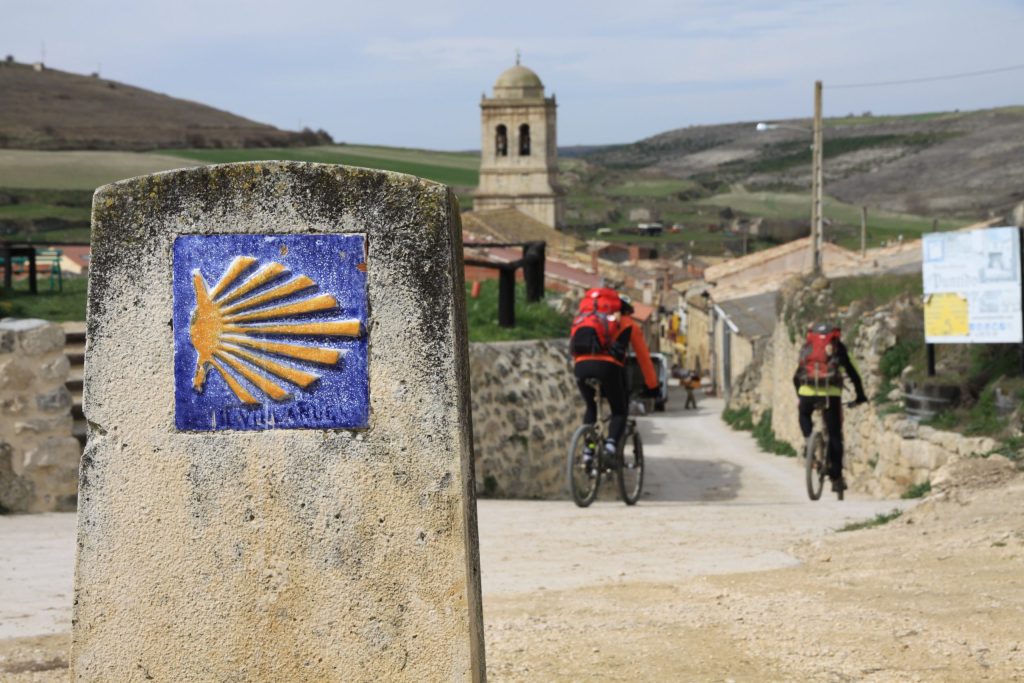

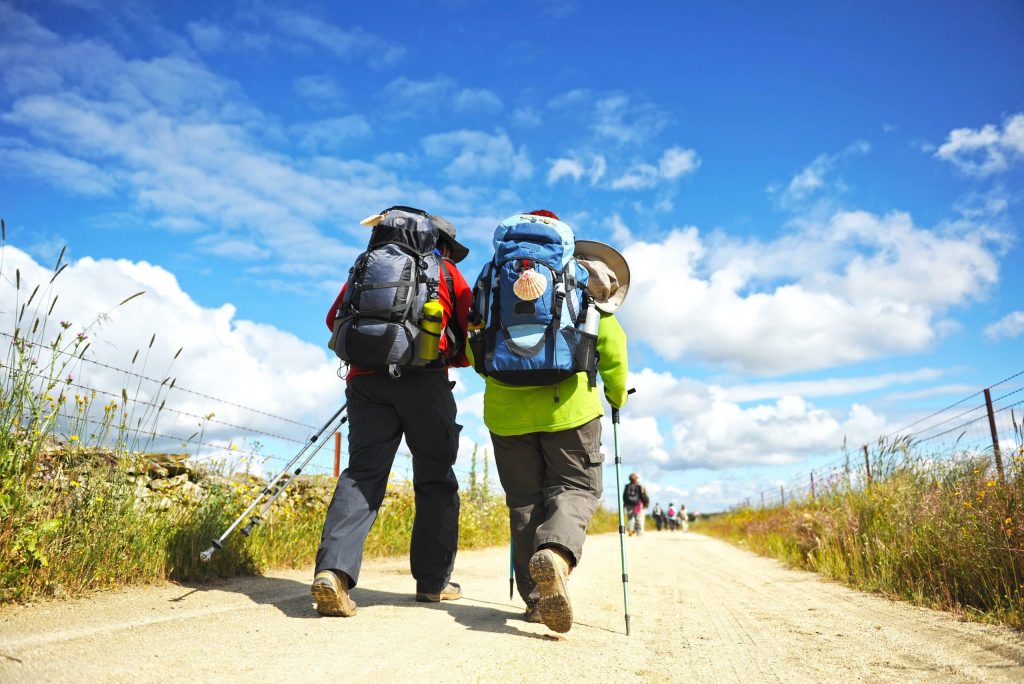
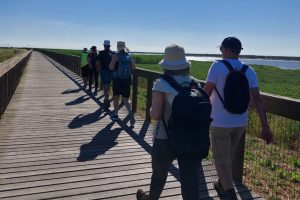


My wife and I did the route a few days ago, but we didn't get the km certificate, is it still possible to get them by email, can you help me? THANK YOU
I've just finished the Camino de Santiago with a group of 10 people along the coast. In Vigo I was struck by the ill will of some of the population (we noticed this when we went into cafés or restaurants). In Vigo we didn't see any road signs. I mentioned this in Padron to the always friendly D. Pepe (Manolo to others) and he told me that more pilgrims had spoken to him.